
Asteroids is a space-themed multidirectional shooter arcade video game designed by Lyle Rains and Ed Logg released in November 1979 by Atari, Inc. The player controls a single spaceship in an asteroid field which is periodically traversed by flying saucers. The object of the game is to shoot and destroy the asteroids and saucers, while not colliding with either, or being hit by the saucers' counter-fire. The game becomes harder as the number of asteroids increases.
Shoot 'em ups are a sub-genre of action games. There is no consensus as to which design elements compose a shoot 'em up; some restrict the definition to games featuring spacecraft and certain types of character movement, while others allow a broader definition including characters on foot and a variety of perspectives.

Apidya is a horizontally scrolling shoot 'em up video game developed by German studio Kaiko and released by Play Byte in 1992 for the Amiga. It was Kaiko's second game developed. Despite being labelled II in the title it is not a sequel to any game, but has the digits placed there simply for a gag.
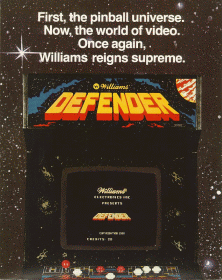
Defender is a horizontally scrolling shooter video game developed by Williams Electronics in 1980 and released for arcades in 1981. The game is set on either an unnamed planet or city where the player must defeat waves of invading aliens while protecting astronauts. Development was led by Eugene Jarvis, a pinball programmer at Williams; Defender was Jarvis's first video game project and drew inspiration from Space Invaders and Asteroids. Defender was demonstrated in late 1980, before entering production in early 1981. It was distributed in Japan by Taito.
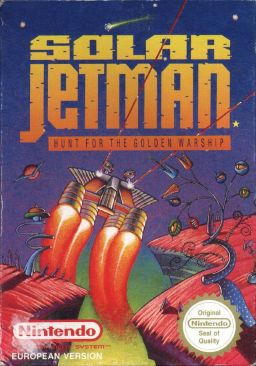
Solar Jetman: Hunt for the Golden Warpship is a multi-directional shooter video game developed by Zippo Games and Rare and published by Tradewest in North America and by Nintendo in Europe. It was released in North America on 14 October 1990 and in Europe on 26 September 1991 for the Nintendo Entertainment System. The game is the third installment of the Jetman series and was later re-released by Nintendo for their NES-based PlayChoice-10 arcade system in the United States in 1990.

Asteroids Deluxe is a multidirectional shooter arcade video game with monochrome vector graphics released in April 1981 by Atari, Inc. It is the sequel to Asteroids and was designed to combat the saucer-hunting strategy of the original allowing experts to play for extended periods. These modifications made it significantly more difficult and less accessible to players. Ports of Asteroids Deluxe were released for the BBC Micro in 1984 and the Atari ST in 1987.
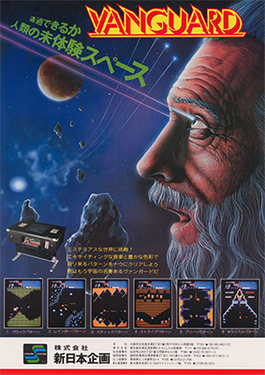
Vanguard is a scrolling shooter arcade video game developed by TOSE. It was released by SNK in Japan and Europe 1981, and licensed to Centuri for manufacture in North America in October and to Zaccaria in Italy the same year. Cinematronics converted the game to cocktail arcade cabinets in North America.

Blasteroids is the third official sequel to the 1979 multidirectional shooter video game, Asteroids. It was developed by Atari Games and released in arcades in 1987. Unlike the previous games, Blasteroids uses raster graphics instead of vector graphics, and has power-ups and a boss.

Salamander 2 is a 1996 horizontally scrolling shooter arcade video game developed and published in Japan by Konami. It is the direct sequel to Salamander (1986) and the third game in the Salamander series, which itself is a spin-off of the Gradius franchise. Up to two players control two starships — the Vic Viper and the Super Cobra — as they must destroy the alien race Doom before they wipe out all of the planet Gradius. Gameplay involves shooting down enemies, collecting power-up items, and avoiding collision with projectiles or obstacles.
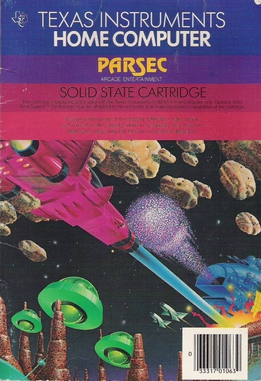
Parsec is a horizontally scrolling shooter written by Jim Dramis and Paul Urbanus for the TI-99/4A and published by Texas Instruments in 1982. Dramis also programmed Car Wars and Munch Man for the TI-99/4A.
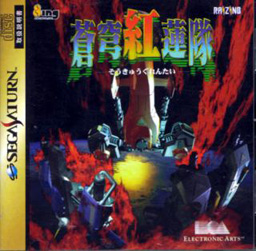
Sōkyūgurentai, also known as Terra Diver, is a vertical-scrolling shooting game by Raizing originally released as an arcade game for the ST-V platform in 1996. The game was ported to the Sega Saturn and PlayStation in 1997, with neither port being released outside of Japan.
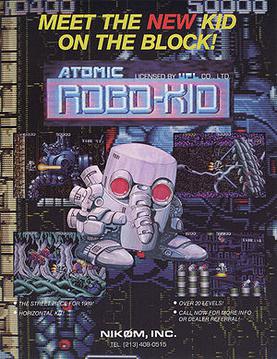
Atomic Robo-Kid (アトミック・ロボキッド) is a horizontally scrolling shooter released in arcades by UPL in 1988. In the US, the game was published by Nikom. The PC Engine version is an adaptation of the arcade original and published as Atomic Robo-Kid Special.

Chicken Invaders is a series of shoot 'em up video games created by Greek indie developer Konstantinos Prouskas. With the release of the first game Chicken Invaders in 1999, the games are one of the longest running series of video games developed in Greece. All six main entries in the series have been developed by Prouskas' InterAction studios, and have been released for Microsoft Windows, OS X, Linux, iOS, Windows Phone, and Android platforms.

Section Z is a horizontally scrolling shooter by Capcom, released as an arcade video game in 1985. A home version was published for the Nintendo Entertainment System in 1987.

Moon Cresta is a fixed shooter video game released by Nichibutsu for arcades in 1980. In North America, it was licensed to Sega/Gremlin and Centuri, the latter releasing it in arcades as Eagle. Incentive Software published ports of Moon Cresta for the Amstrad CPC, Commodore 64, Dragon 32 and ZX Spectrum home computers. In 2022, the original arcade version will be included as part of the Sega Astro City Mini V, a vertically-oriented variant of the Sega Astro City mini console.
Lunar Rescue is an arcade game released by Taito in November 1979. The gameplay has some resemblance to both Taito's own 1978 hit Space Invaders and Atari, Inc.'s Lunar Lander.

Yars' Revenge is a video game released for the Atari 2600 in 1982. It was created by Howard Scott Warshaw and is Atari's best-selling original game for the 2600.

Star Trek: 25th Anniversary is a 1992 Game Boy video game developed by Visual Concepts and published by Ultra, based upon the Star Trek universe. The game chronicles a mission of James T. Kirk and his crew of the USS Enterprise. Despite having the same name, the Game Boy version is not a port of the NES game or computer versions, and is in fact a completely different game. It was succeeded by Star Trek: The Next Generation for Game Boy, developed and published by Absolute Entertainment the following year.

Solar Minotaur Rescue Frenzy, shortened to Minotaur Rescue for the iOS App Store, is a multidirectional shooter for iOS developed by Jeff Minter and Ivan Zorzin of Llamasoft and released in January 2011. It was Llamasoft's first iOS game. On the iPhone, the game supports up to two players at the same time. On an iPad, it supports up to four.
A vertically scrolling video game or vertical scroller is a video game in which the player views the field of play principally from a top-down perspective, while the background scrolls from the top of the screen to the bottom to create the illusion that the player character is moving in the game world.

















